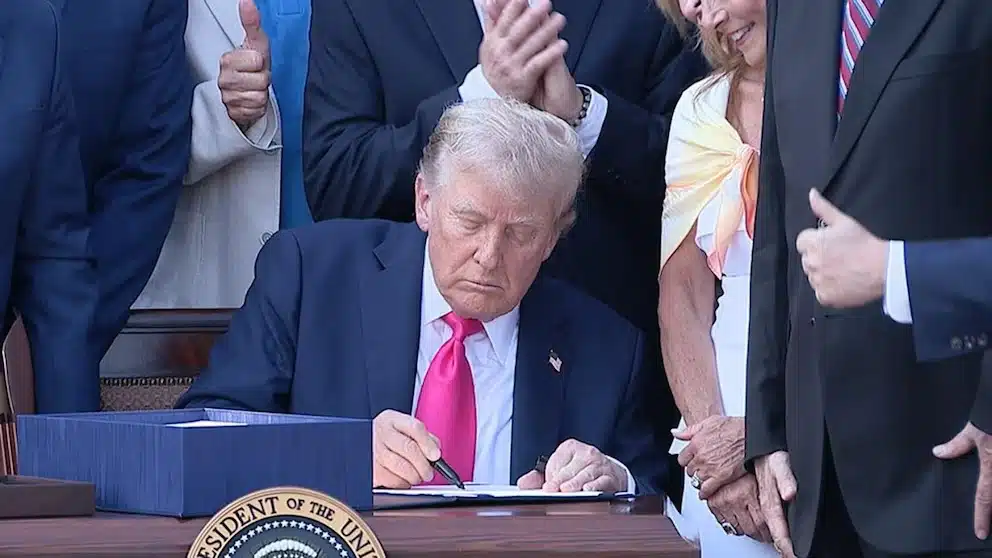

President Donald Trump on Friday removed Erika McEntarfer, the Biden-era head of the Bureau of Labor Statistics (BLS), following a wave of downward job revisions and mounting criticism over data accuracy at the Labor Department. The decision comes as new reports show a consistent pattern of overestimated employment figures under McEntarfer’s leadership — errors that critics argue misled financial markets and Federal Reserve policy decisions.
BLS job numbers revised down multiple times
On August 1, BLS reported that the U.S. added only 73,000 jobs in July. More significantly, it revised May and June totals down by 258,000 combined. These were not isolated cases.
In 2024, BLS cut reported job gains for April and May by more than 110,000.A March 2024 benchmark revision showed 818,000 fewer jobs than initially reported — the second-largest adjustment in history.The Heritage Foundation found an 832,000-job gap between two major reports covering the same quarter.
Overstatements of job creation led the Federal Reserve to delay interest rate cuts. In June and July, The New York Times reported that upbeat jobs data gave the Fed confidence to keep rates high.
Trump: “We need accurate Jobs Numbers”
On Truth Social, Trump accused McEntarfer of rigging the numbers. He offered no direct evidence but wrote: “She will be replaced with someone much more competent and qualified.”
The White House says the problems go beyond politics. A senior official noted the persistent issues began during COVID and were never fully resolved. Declining response rates and shrinking resources made accurate reporting harder over time.
“We just weren’t getting reliable data,” the official told Reuters.
Survey participation for the monthly jobs report dropped from over 80% in 2020 to around 67% in July 2025, according to BLS.
Data quality failures under scrutiny
The BLS has faced several controversies in the last 18 months:
In March 2024, a BLS economist leaked nonpublic data to Wall Street firms.On two occasions, job or inflation numbers were posted early, giving some financial firms an unfair advantage.In July 2024, revised figures showed the Biden administration overstated job creation by more than 1.1 million jobs in the prior year.Bloomberg reported large-scale miscalculations that raised concerns in financial markets and on Capitol Hill.
Congressional Republicans have repeatedly demanded answers from the Biden administration. Committee leaders say the pattern of overstatement and mismanagement has eroded public trust in government statistics.
Fed shake-up adds political weight
Trump’s decision to remove McEntarfer came hours before another major shift. Federal Reserve Governor Adriana Kugler unexpectedly announced her resignation, giving Trump an early opportunity to influence central bank leadership.
He will now appoint someone to finish Kugler’s term, which runs until January 2026. That pick could shape the future of U.S. monetary policy, especially with Fed Chair Jerome Powell’s term ending in May.
Trump has criticized Powell for keeping rates high. Some believe the President may nominate a potential successor now to test support. Possible candidates include Trump economic adviser Kevin Hassett, Treasury Secretary Scott Bessent, and current Fed Governor Chris Waller.
What happens next
Trump’s actions signal a more aggressive approach to federal economic oversight. By reshuffling both the Labor Department and potentially the Federal Reserve, his administration aims to restore what it calls “credibility” in government reporting.
With inflation, jobs, and interest rates dominating public concern, accurate data — and who controls it — could have far-reaching political and financial consequences.
Get the latest headlines delivered to your inbox each morning. Sign up for our Morning Edition to start your day. FL1 on the Go! Download the free FingerLakes1.com App for iOS (iPhone, iPad).